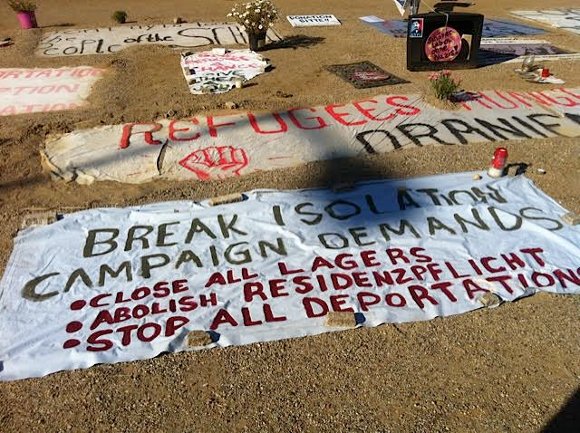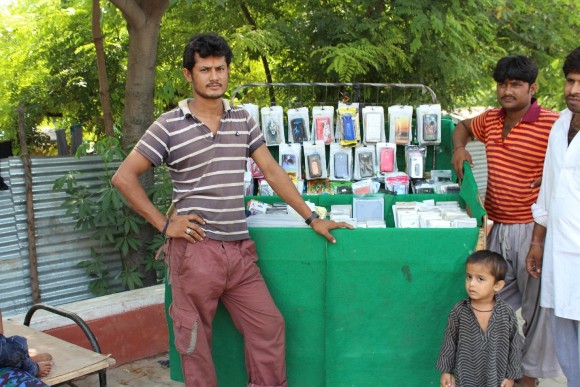Communal riots had broken out in March 1947 in Rawalpindi, a twin city to Islamabad in present day Pakistan. A young boy living in Aria Mohalla opposite Government Gordon College witnessed some bloody killings on the road leading to the college. He ran to the safety of his home in the neighbourhood. For days his family was locked indoors, fearing the worst as the situation deteriorated outside. They were fast becoming the persecuted religious minority in the area.
Finally, in April 1947 the boy’s family had to take the decision to leave the city to stay alive and to give him and his young siblings the chance for a future. Their only way out and away was the train. They packed a few belongings and left everything else behind, locking up the house hoping to return someday. But that was not to be.
In the first week of May 1947, they boarded a train from the Rawalpindi railway station, approximately 2.5 km from their home, heading to what was to become India’s Punjab. The train was jam-packed with everyone sitting shoulder-to-shoulder; there was no place to stretch out on its overcrowded berths. Neither was there adequate food or drinking water on board. Whatever little people had carried along, they had finished on the way.
A journey of about 275 km took more than two days. The train was stuck at Lahore en route for nearly forty-eight hours. The morning after, as the train slowly chugged into Amritsar railway station, a makeshift community kitchen organised by volunteers generously distributed freshly cooked food for free to the entire train. This was etched in the mind of the boy.
In the years to come, more than the atrocities, this kindness was oft recounted in the family. The simple hot meal offered by strangers after the trauma of the preceding days had not only left everyone fed, but had filled their hearts, rekindling their faith in humanity.
Meanwhile, the family’s one-way trip on that train was to be the start of another life. The home they left behind in the city in which the boy was born was to become a ‘foreign’ land, with the creation of the independent nations of India and Pakistan in August 1947. Real anecdotes such as these suddenly gain in relevance anew, as the world grapples with one of the worst humanitarian crises in modern history.
International law
Today many in Syria and other conflict-ridden areas of the world might never make it to a refugee train. If they do, refugee policies of the country they finally find themselves in will determine the future course of their lives.

Germany has an Asylum-Seekers Benefits Act and its Constitution grants foreigners the fundamental Right of Asylum. Pic: Shalini Bhutani
Article 14 of the Universal Declaration of Human Rights gives everyone the right to seek and to enjoy in other countries asylum from persecution. This puts a moral and ethical obligation on states. The international legal obligations are contained in the United Nations Convention (1951) and Protocol (1967) Relating to the Status of Refugees. Born out of the situation created in Europe by the World War II, the Convention came into being to help those in Europe flee. Ironically, today there is a mass exodus of people to Europe.
As per the Convention a ‘refugee’ is someone who “...owing to the well-founded fear of being persecuted for reasons of race, religion, nationality, membership of a particular social group or political opinion, is outside the country of his nationality and is unable or, owing to such fear, is unwilling to avail himself of the protection of that country; or who, not having a nationality and being outside the country of his former habitual residence as a result of such events, is unable or, owing to such fear, is unwilling to return to it.”
The Convention legally constrains member countries to exercise their sovereign right to decide who can enter their territory, remain there and those who cannot. The international legal principle of non-refoulement prevents a country from expelling refugees. The Convention also expressly stipulates the non-penalisation of refugees for their illegal entry or stay.
As per the Convention, refugees have a set of rights, which include access to basic education, to health services, to decent employment etc. It also prescribes the issue of necessary documents, such as for refugee identity and travel purpose, commonly called the ‘Nansen passport’.
Despite the Convention or perhaps even because of it, many member countries have been taking measures that in fact undermine the Convention itself. Several governments are adopting offshore asylum policies to evade the legal responsibilities to refugees that come with their territorial presence. This means that countries either park refugees in transit areas or designated ‘international zones’ or re-route them physically off their territory (just as Australia diverts incoming ‘boat people’ to the island nation of Nauru or Papua New Guinea), preventing refugees from seeking protection under the laws of the land.
Additionally, one hears of the non-entrée regime, which refers to the different kinds of policies adopted by countries to make it difficult or impossible for refugees to access their territory legally. The most common policy is the visa mandate, particularly for those countries that constantly produce economic migrants. This makes entry for genuine refugees even more difficult.

People's solidarity demonstration in Oranienplatz in Berlin, 2014. Pic: Shalini Bhutani
Regional policies
At the time that the Convention was being finalised at the international level, the Constitution of India was being debated at the national level. For a country like India that was born with a refugee crisis, it is hard to fathom why it has no coherently articulated refugee policy to date.
Equally notable is the fact that neither is there one for the South Asian region as a whole. Regionalisation of asylum policies is essential to be able to deal with forced migration. None of the countries in the region are party to the international Convention. In any case, mere membership to the Convention will not bring ready-made solutions for the particular problems of the region.
These precisely are the reasons for India to play a more constructive role, apart from allowing the United Nations High Commissioner for Refugees (UNHCR) to have an office in Delhi. There was an initiative that began in Delhi in 1996 to develop a Model National Law for Refugees for South Asian countries, but that has not made progress either.
In the absence of a refugee law, when Afghanis, Bangladeshis, Burmese, Sri Lankans or Tibetans arrive in India, they are dealt with on a case-to-case basis. The official response is largely ad hoc. Because there is no national law on refugees, they don’t automatically get internationally recognised legal entitlements. Matters are further complicated by the existing Indian law – Foreigners Act, 1946 (amended 2004) and its Order of 1948 that give wide powers to the government for detention and deportation.
In September 2014, the Government of India set up a taskforce under the Ministry of Home Affairs (MHA) to monitor and expedite the pending applications of Long Term Visas (LTV) and subsequent grant of citizenship. But whether this will give protection to all bona fide refugees in India is yet to be seen. The latest decision by the MHA dated 7 September 2015 exempts minority populations from Bangladesh and Pakistan who have entered India on or before 31 December 2014 from legal requirements of entry and stay in the country on ‘humanitarian considerations’.
Pakistani Hindu refugees in a refugee camp near Majnu-ka-tila, Delhi. Pic: Devanik Saha
The religious and political import of this cannot escape notice. BJP’s Election Manifesto 2014 had expressly stated that (t)he long pending problems and demands of refugees from Pakistan Occupied Kashmir (POK) will be addressed. However, in the context of the country’s northeastern frontier, the same manifesto document states that it will address the issue of illegal immigrants and also complete all pending fencing work along the India-Bangladesh and India-Myanmar border, stepping up border security.
India and other countries in the region are still a long way from breaking out of the mould in which refugee issues get entangled with political interests, security concerns and economic protectionism.
Foreign policy with its neighbours is high on the priority of the present Indian government and the emphasis is on economic diplomacy. But inequitable trade and investment agreements between unequal trading partners only exacerbate disparities, compelling people to move.
India’s political centre Delhi bears ample evidence of the massive south-south migration flow due to political, economic and other reasons. But that alone is not enough justification for the manner in which New Delhi deals with the issue. It is absolutely critical to differentiate between a regular immigrant and a refugee as defined above in the international law.
Human consideration
Any refugee policy has to be driven by the awareness that these are people who have been forced to leave their countries due to war and serious human rights violations. They are not mere migrants.

Individual or community-level humanitarian acts in assistance of refugees can only provide a temporary bandage; however, a lasting cure to the problem lies in inter-governmental co-operation and government policies. Governments at their own level and collectively have to create the conditions for the safe, decent, dignified life of refugee populations physically present in their territories.
Needless to say public opinion, too, can play a critical role in the development of public policy in this area.
Moreover, the question has to be broadened from “how do we deal with refugees” to the wider one of “how do we prevent refugees from being made”. Until and unless political turmoil, armed conflict and gender-based violence and its real impact on humans is squarely confronted, the refugee crisis cannot be addressed.
References
http://www.aljazeera.com/indepth/opinion/2015/08/refugees-terminology-matters-150831091756282.html
























